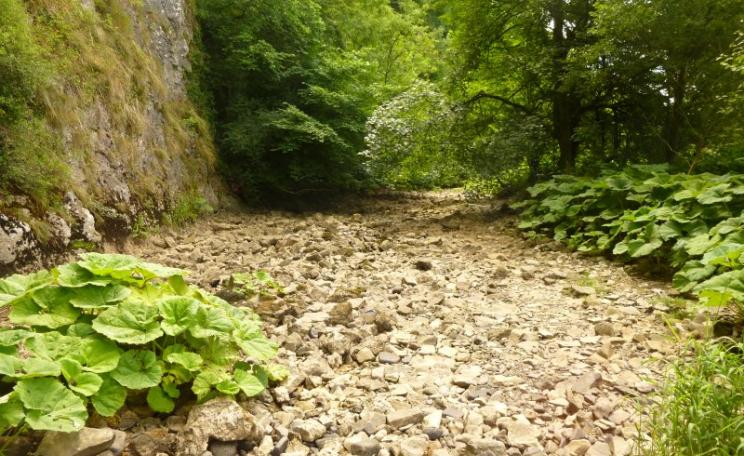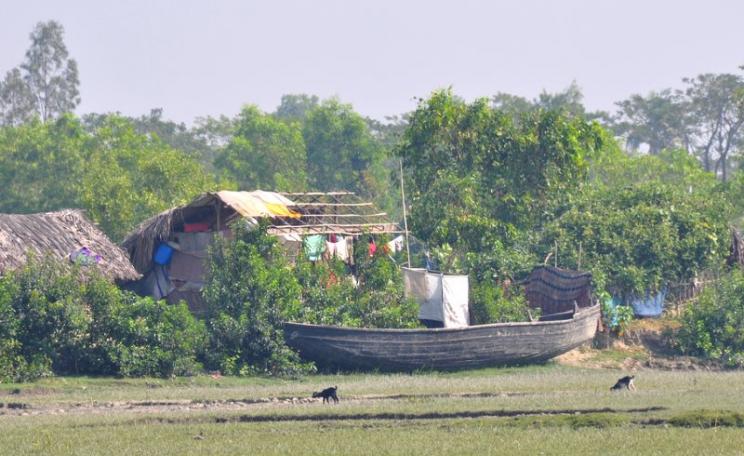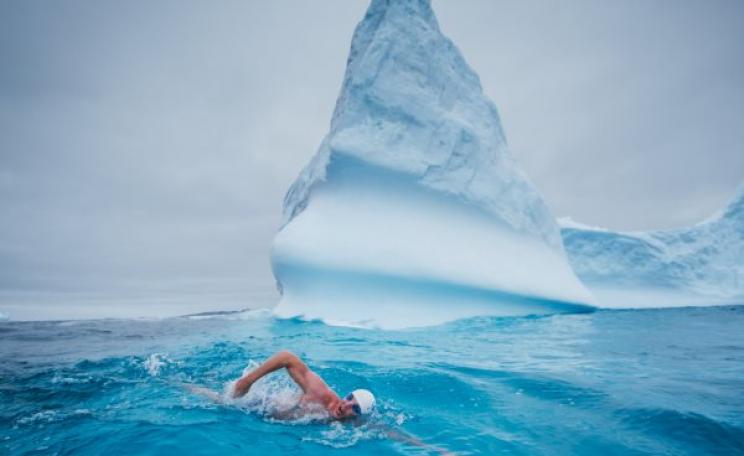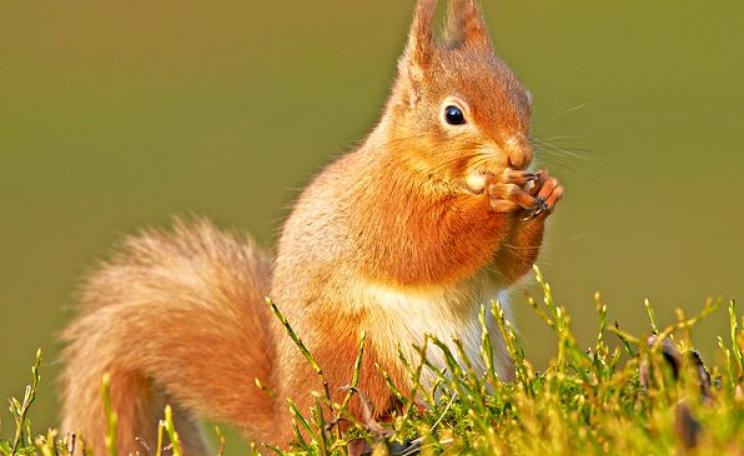Invasive species are the second biggest threat to biodiversity after habitat loss. The zebra and quagga mussels are no exception - the latter smothers and chokes other mussels to death.
On September 29, 2014, Samantha Ho was wading through the Wraysbury River, a shallow stream that runs just a few miles south of the busy tarmac at London's Heathrow Airport. She was collecting a 'kick' sample, a routine at a designated point that is visited once or twice a year, for the Environment Agency.
But this time was different: among the mud and grass Ho found a small mussel, no bigger than a thumbnail, which looked vaguely familiar.
"I separated it out and carried on", she says. "The fact that it was an unusual environment - fast-flowing, not a canal - and that I had sampled there before and not found it, were all things that roused my suspicion." She brought it back to the lab and a quick check online confirmed it: she had found a quagga mussel.
Although it was a long way from home, the mussel's arrival had been anticipated by ecologists for a while. It's one of a number of non-native species that are increasingly making their way to Britain and posing a considerable threat to native plants and animals.
The larvae of the quagga are microscopic and a single mussel can produce millions of eggs, up to 200,000 in a single season (which lasts from April to November). Their size is one of the reasons they're so problematic, according to Belinda Gallardo, an aquatic ecologist who studied the ecological impact of invasive species as a researcher at the University of Cambridge.
"It's really, really difficult to contain, unless it is located in a very isolated water body that you can basically drain to eradicate everything in it", she says. "There are techniques in place and we are testing different options, but as far as I know it can not be controlled in open water."
A major 'biofouling' hazard: pipes, valves, hulls, propellers ...
Originating in the Ponto-Caspian region around the Black Sea, the quagga mussel is joining its larger cousin, the zebra mussel, which has been established in Britain for roughly 200 years and is thought to cost the UK at least £5 million a year.
At a recent workshop on the quagga mussel at the Zoological Society of London, Jason Eccles, Thames Water's Regional Production Manager for West London, briefed an assembly of scientists, activists and representatives of organisations that are interested in the quagga.
He demonstrated the impact of the mussel through images like that of a large boat propeller, completely covered by several layers of quagga mussels, which had been pulled out of Lake Mead in Nevada (see photo, above).
Whether in the US or the UK, both the zebra and quagga are troublemakers. The mussels' 'beard', a small thread of hairs that looks like brown seaweed, allows them to attach to surfaces and to each other, meaning that large numbers of them block pipes and valves wherever they occur. This so-called biofouling comes with considerable costs to the water and power industry.
Invasive species are the second biggest threat to biodiversity after habitat loss. The zebra and quagga mussels are no exception - the latter smothers and chokes other mussels to death.
Eccles says that Thames Water, the UK's largest water provider, already spends millions of pounds clearing underground tunnels. With the arrival of the quagga, he says, this will have to be done even more frequently in the future.
Tackling the problems caused by invasive species quickly becomes even more costly when viewed as a whole. The Environment Agency estimates the costs associated with non-native species (there are over 3,000 in the UK) to figure around £1.7 billion per year.
The roughly 12,000 species that have invaded new habitats around Europe, with their combined impact on native biodiversity, agriculture, health and the economy, create costs upwards of €12 billion (£9.4 billion) a year.
Native ecosystems at risk
On top of that, invasive species are the second biggest threat to biodiversity after habitat loss. The zebra and quagga mussels are no exception - the latter smothers and chokes other mussels to death.
And because it filters nutrients out of the water (a single quagga can go through up to two litres every day), it changes the nature of entire ecosystems, which in turn can facilitate life for predators or even kill off entire populations.
"It's the species we thought was most threatening", says Gallardo. "These Ponto-Caspian species, as a group, are probably the most threatening of aquatic invasive species. Ten years ago, there were only two or three of these species in Britain, and right now there are ten or 15 already. And there are another 100 species currently travelling along Europe, and they will end up here as well, sooner or later."
Gallardo points out that one of the Ponto-Caspian species' most dangerous characteristics is their ability to thrive in new habitats. Because they are generalist feeders, they can modify their environment to fit their needs: "They come from a region where they experience very high changes in climate and environmental conditions, and that makes them very able to adapt."
It gets worse. Because they are used to living together, the zebra and quagga mussel even facilitate each other: the zebra lays down an ideal substrate for the quagga in riverbeds and on the bottom of reservoirs.
"They already have close interactions and that's why they are so worrying. They easily establish together and build up communities that resemble more of their native range than the actual English range", Gallardo says.
And this applies to the rest of the Ponto-Caspian invaders too. The killer shrimp, which was first recorded in Britain in 2010, feeds off the waste of the zebra and even imitates the mussel's striped pattern.
This is why Gallardo and her fellow researchers speak of an "invasional meltdown" when it comes to the increasing rate of invasions. Their theory is that, as more and more species arrive and support each other, the problem will become exponentially worse.
Eradication? No chance. Maybe an ice age ...
At the workshop in London, the most eagerly awaited speaker was David Aldridge, a lecturer in aquatic ecology at Cambridge and the foremost expert on quagga mussels in the UK. His bottom line is sobering. "We're really just waiting for these pests to arrive. And you can't do much once they're here", he says.
And with no chance of eradicating species once they reach the UK, it all comes down to prevention: "From a broader, national policy, we're interested in really trying to identify what the future invaders are and perhaps use things like quagga mussels as a model for patterns and pathways for invasion so that we can try and do our best to stop things coming here."
The Victorians first started importing ornamental plants in the 19th century - it is them we have to thank for pests like Himalayan balsam or giant hogweed, plants that usually dominate media coverage when it comes to invasive species.
The number of intentionally introduced animals and plants is declining nowadays, but with the building of new canals and waterways, aquatic species have increasingly been making their way across Europe on their own.
The aquatic invaders spread through a number of different ways: ballast water in ships, the movement of soil or water and the contamination of fishing gear, sports equipment or boats. A single pool of water in a fishing boat returning from Europe can introduce a new species.
"We already knew this species was coming and I know there's been a lot of work to develop an early-warning system", says Gallardo.
Despite new laws, the quagga will be soon be everywhere
She also thinks the UK is more advanced in dealing with the problem than the rest of Europe, thanks in large part to the Great Britain Non-Native Species Secretariat. The secretariat, which was formed in 2006, is an attempt to bring some coordination to a naturally messy problem.
Its current campaign is accordingly basic. 'Check, Clean, Dry' aims to get the word out to angling societies, boat clubs and the like, so that their members keep their equipment in check and thereby avoid spreading the mussels between different ecosystems.
What is missing so far is comprehensive legislation. "We've got nests in various different pieces of legislation but we don't have one itself", says Karen Harper, who manages the London Invasive Species Initiative and organized the event at the Zoological Society.
Last January 1st new EU legislation has come into effect, the first specifically geared towards alien species. Member states are now required to notify others if certain species are detected, which could result in bans of trade, for example.
Helen Roy, an ecological entomologist at the Centre for Ecology and Hydrology in Oxfordshire, chairs a European-wide information exchange program on invasive species and thinks the legislation will consolidate existing links between countries.
"It's very exciting to think that we will have a regulation that will apply across all member states", she says. "I think we already have some great collaborations with our near neighbors. And that's extremely important when thinking about prevention of the arrival of alien species."
Harper is hopeful too. "I think it's a step in the right direction - to everyone realizing that it is a real problem and needs to be managed."
The Wraysbury River flows into the Thames only a few miles downriver from where Ho found the quagga in late September. Aldridge says it is only a matter of time before its spread becomes uncontrollable.
In fact, barely a month after the workshop took place, quagga mussels had already been found in the Thames and six nearby reservoirs. "I expect that in the next four years or so it will be widespread across the UK", Aldridge says. "I mean it won't be everywhere it can get, but I think it will be in lots of the major waterways."
Yannic Rack is a journalist at City University London who has written for local newspapers in the UK and the US, and the editor of a hyperlocal news website in London.






